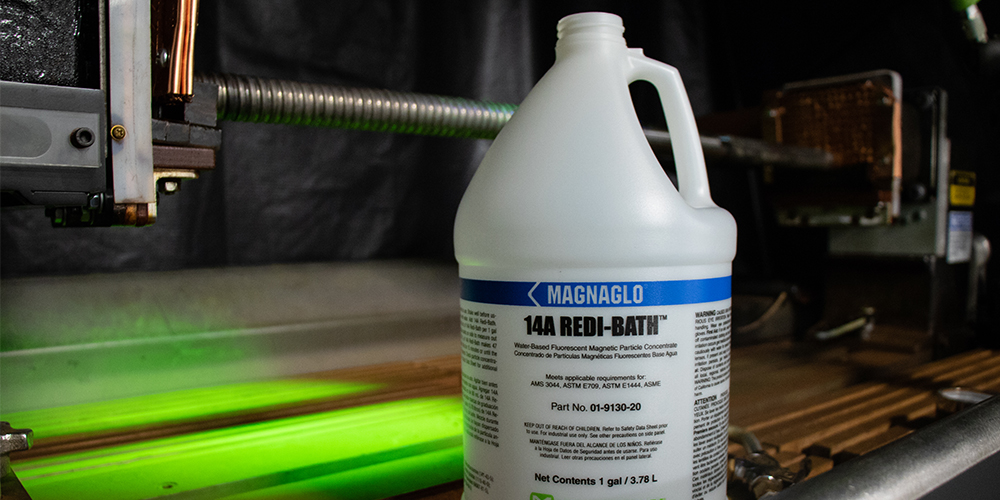By Kevin Walker, updated by Cheri Stockhausen, Product Applications Manager

Bath maintenance is important due to changes of the vehicle solution during use. These changes, in some cases, can prevent indications from forming. Changes in the vehicle solution can include:
The amount of magnetic particles per gallon of fluid in the bath is called bath strength or concentration. The bath strength will determine if discontinuities can be properly located.
If the bath concentration is below the recommended strength, weak indications will be produced or possibly no indications will appear; therefore, defects will not be detected. If the bath concentration is too high, heavy background may mask indications. Normally the usable limits of bath strength are quite broad, but for consistent results, the bath strength should be held constant.
Bath strength should be checked at least once each working shift. To check the strength of the bath, the entire bath should be thoroughly mixed and agitated, circulating the bath at least 15 minutes before a check is performed. The most widely used method is by gravity settling in a graduated ASTM approved pear-shaped centrifuge tube. Per ASTM E 1444, the settling tube should have a volume of 100 mL.
Maintaining proper bath strength over long periods of time may be difficult due to drag-out and evaporation, and measures that are needed to correct bath strength for each cause is different.
This is especially true with water baths due to the higher evaporation rate compared to oil baths. In hot weather, the bath should be checked more often. Special conditioners must be added to a water bath to perform the inspection. These conditioners are either pre-mixed in a concentrate of magnetic particles and conditioners or the conditioners are added separately. Since these conditioners have a lower evaporation rate than water, the conditioner and the particles will build up in the bath as the water evaporates. Therefore, you will need only to add water to maintain the proper balance of particles and conditioners in the bath. In the case of an oil bath, simply add oil.
To build up bath strength from losses due to drag-out, particles, conditioners for water bath and fluid must be added to maintain bath strength. For units that are constantly in use, drag-out most likely will be the main cause for volume loss. For units that are occasionally used evaporation would be a concern.
Contamination of a bath can be determined in the magnetic particle settling test. Since the magnetic particles are heavier than the dirt and dust particles, the magnetic particles will settle faster. A distinct layer can be seen above the magnetic particles; this layer must be excluded when determining the concentration level.
Repeat steps 7 & 8 if necessary. When the unit is thoroughly clean, add fresh water and magnetic particle material.
The cleaning of parts prior to inspection is very important to prevent dirt and dust contamination of the bath. When the layer of dirt reaches the same volume as the magnetic particles, the bath should be changed or cleaned, as the dirt may obstruct the formation of proper indications.
Maintaining a proper bath for magnetic particle inspection is crucial to finding discontinuities. Therefore, all magnetic particle baths, whether oil or water, need to be regularly checked. Proper steps should be taken to ensure that the bath never gets over contaminated, and is cleaned at correct intervals.
Published April 24, 2018
JOIN OUR MAILING LIST TO RECEIVE THE LATEST NDT INSIGHTS AND ARTICLES FROM MAGNAFLUX
JOIN OUR MAILING LIST TO RECEIVE THE LATEST NDT INSIGHTS AND ARTICLES FROM MAGNAFLUX
155 Harlem Avenue
Glenview, IL 60025, USA
Telephone: +1 847-657-5300
Contact Magnaflux Customer Service